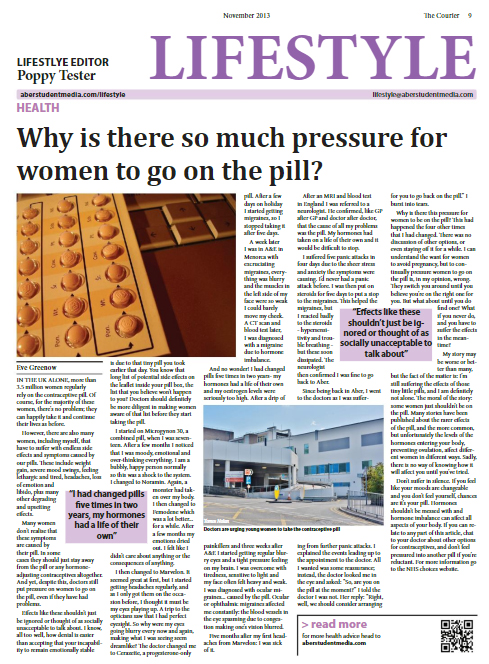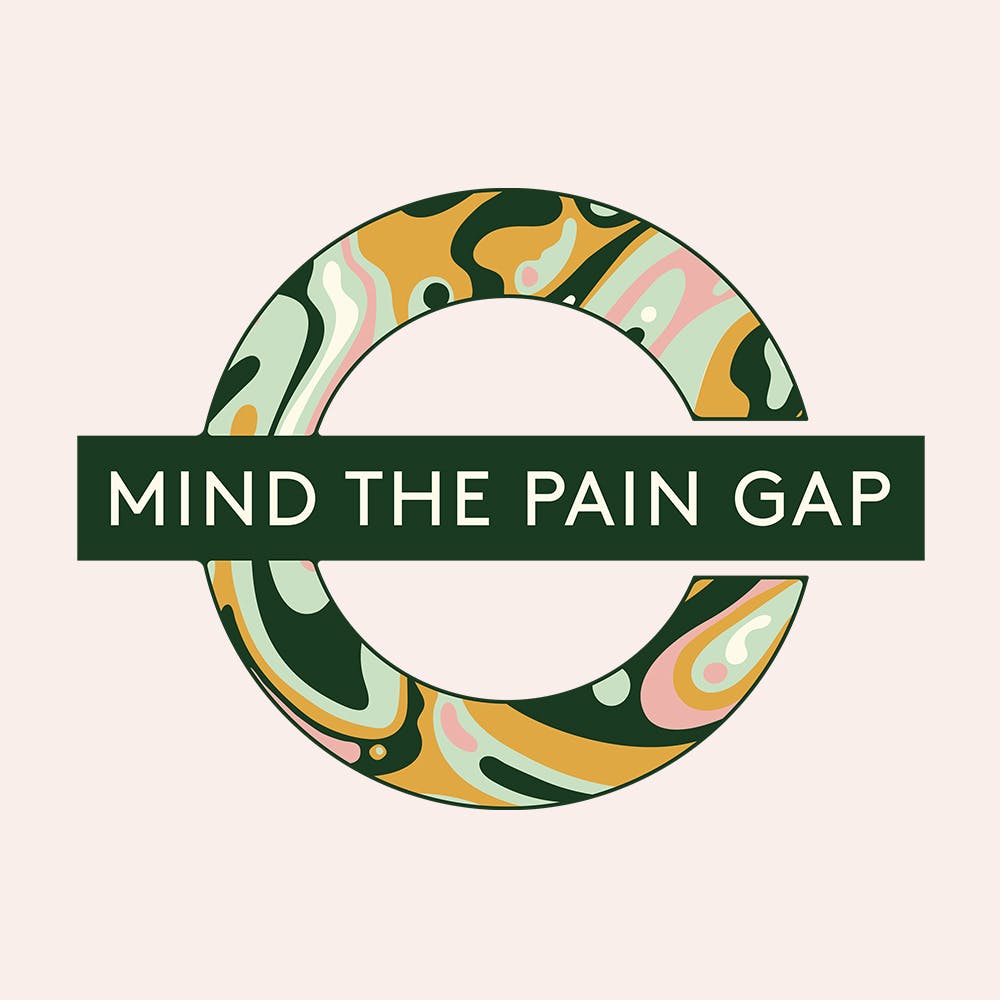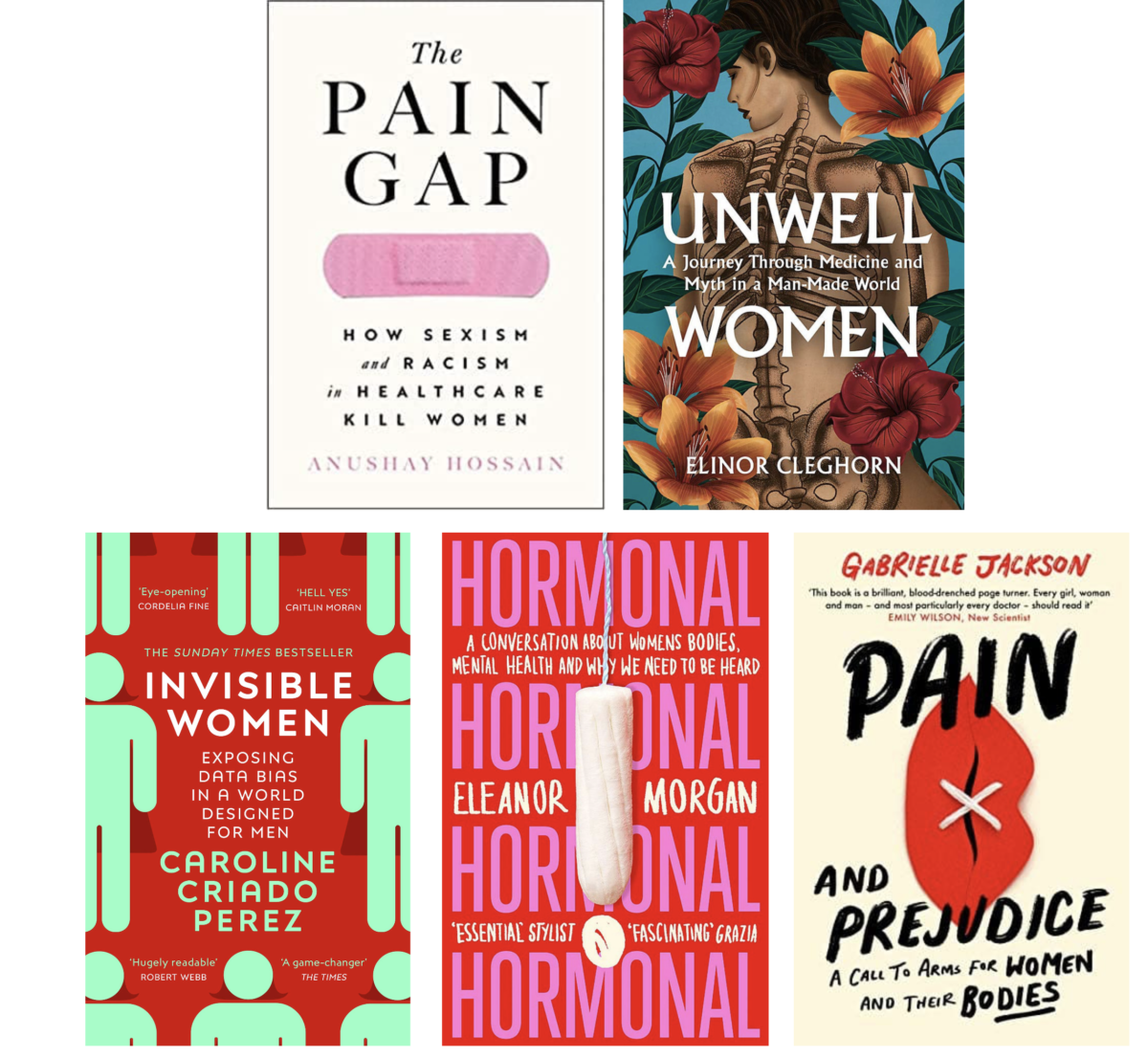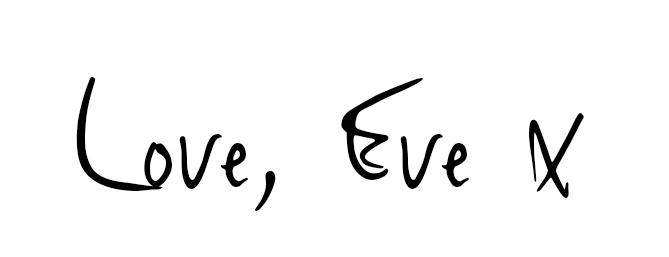
You have probably heard of the gender pay gap, but have you heard of the gender pain gap? With the ongoing IUD debate, why is female pain still not taken seriously?
Nine years after coming off all hormonal contraception medication, I still suffer the side-effects.
Rewind back in 2013: My mental headspace was in chaos. Depressed, unmotivated and very, very lonely at Aberystwyth university. That summer I had been hospitalised in Menorca with stroke-like symptoms, dripped up, scanned and panic-ridden. I’d been diagnosed after a series of tests and scans with hemiplegic migraines triggered by the sheer havoc of hormones from jumping through 5 different pills in 2 years: Microgynon, Noramin, Femodene, Marvelon and Cerazette.
I was assigned a neurologist and juiced up with steroids to attempt to reduce the migraines. I reacted badly to the steroids with hypersensitivity and feeling like I was being strangled. From this experience I had my first panic attacks, which would turn to panic disorder and agoraphobia.
At the time, I was inspired to write about my issues with the contraceptive pill for my University newspaper, The Courier. You can read the original article here: The Pill: It’s Just Not Meant For Some Women.

It was only recently when discussing with a friend about what contraceptive’s I use, did I remind myself of the repercussions of the traumatic ordeal I still, to this day, have to deal with, and why I became so passionate about writing about women’s health.
I still have hemiplegic migraines every month like clockwork. I still have panic attacks when my hormones go all over the place.
However this post isn’t about me. It’s about female pain and why we go unlistened to: why there is a gender pain gap. I still believe not enough has been done, 9 years on, to help women who are suffering.
I feel like a bad feminist
Equality for men and women. For me, feminism is really that simple. It’s not about making men feel bad or weaker. It’s about giving women equal opportunity, equal freedom, equal lack of obstacles purely based on their genitals.
Back in 1967 the pill was revolutionary for women – it gave women the choice about having children, freedom to rightfully explore sexuality, and ultimately gave agency over their bodies. It was a huge step in the right direction for equality for men and women.
Don’t get me wrong, I’m not disputing that for millions of women worldwide, the pill is quite literally, a life-saver – hence why I feel like a bad feminist. However, for me, the problem lies in the fact that not really that much has changed with the pill since 1967 (that’s 54 years!).
I took the same pill (Microgynon) in 2011 that my mother was taking 30 years before in the 1980’s, and whilst she got on just fine: I certainly did not.
My sister, a few years back, was offered to go on contraceptive combined pill, Rigevidon as her first experience of the contraceptive pill. Having seen the sheer state I was in years before, she was very reluctant to say the least. Not to mention, Rigevidon has been called by hundreds of women to be banned after causing blood clots and killing women.
She told her doctor of my experience, to which she was told there was no other option for her until she’d taken Rigevidon long enough to know she didn’t want to be on it. Sound familiar?
My sister was only young at the time, around the same age I was when I was convinced into taking different pills over and over. As you can imagined I was scared and enraged in equal measure for her.
Where did the agency go? Why wasn’t she listened to? Why can’t we choose what we put in our bodies to give us the confidence we need?
Have we gone backwards? ‘Cause I’m telling you now if my sister was a young man – she wouldn’t have been given only one choice to take or leave.

Healthcare underpinned by patriarchy: female pain is still not taken seriously
When you’re not affected by something, it can be really easy to ignore a problem.
There is a huge amount of sexism in the health industry, underpinned by the patriarchy: from female contraception with side effects being overlooked, to a whole industry of unregulated ingredients in women’s menstrual products, to the “pain bias” of “brave men” and “emotional women”, where women’s pain is batted away, when men’s pain is taken seriously.
In the Victorian era women’s illnesses were said to be the result of “hysteria” and women were institutionalised rather than treated. This sort of practice happens today, where we’re told our pain is merely perceived, or “all in our head”.
Hence why it takes an average of 6 years in the UK to diagnose conditions like Endometriosis, and why women are 50% more likely to be given incorrect diagnosis following a heart attack. The British Heart Foundation funded research estimates that more than 8,200 women in England and Wales died over a ten-year period because they did not receive equal treatment to men.
We have a mass-produced market for female hormone contraception to stop pregnancy, but carries a huge array of side effects – and yet the only male alternative is condoms.
There have also been scientists looking into longer-acting birth control hormones in a jab given every other month. But they stopped enrolling men to their phase-two study, looking at the safety and effectiveness of the injection, after some of the volunteers reported side-effects, including mood disorders or depression. These side effects many of us know far too well from taking female contraception.
When women show up to A&E with abdominal pain, they wait on average 65 minutes while men only wait 49. Women are also 25% less likely to be prescribed pain relief than men.
For women of colour the situation is even bleaker. Black African women were least likely to receive pain relief during labour, and are also 5 times more likely to die of childbirth than white women.
Women were banned from clinical trials until 1993, and the male physiology has been used as a standard to test drug effectiveness and safety. Most over-the-counter painkillers have never been tested on women.
Women are 50% more likely to be given incorrect diagnosis following a heart attack
There is another debate at the moment about the supposedly “painless” IUD fitting and how it can be excruciatingly painful for many women. There are stories of women fainting (my friend also fainted when having her IUD fitted), and being told just to take paracetamol. With the pain said to be on the same level as a small fracture (where you’d be offered morphine), surely it’s a form of gaslighting to tell women that their pain is normal and to just… deal with it?

What can we do to change this?
Honestly I’ve thought long and hard about this. It can be unbelievably difficult when you’re in the situation, face to face with a doctor and feel unheard and in pain. I’ve had many a time leaving a GP crying cause I’ve felt dismissed and worried.
When you visit your doctor, make sure you’re accompanied by another person who you trust, and don’t be scared to ask for a nurse chaperone or pain relief if you need it. If the doctor isn’t listening to you or you feel unheard and uncomfortable, go to another doctor, and if they don’t listen, go to another doctor. I’ve heard stories of women seeing 25 GPs before being diagnosed with Endometriosis in particular.
Thousands of pain-free, minimally invasive procedures take place across our NHS every day. If a dentist can offer you sedation for a filling, it is beyond time to give women effective pain relief.
The government must actually start listening to women’s stories and there has been a recent call for evidence where 112,000 women told them about their experiences of a health service designed by men, for men, where male is the default.
I’ll leave you with a soliloquy from Fleabag about pain, which I found particularly poignant:
“I’ve been longing to say this out loud — women are born with pain built in, it’s our physical destiny — period pain, sore boobs, childbirth, you know. We carry it with ourselves throughout our lives,” “Men don’t. They have to invent things like gods and demons… they create wars so they can feel things and touch each other… and we have it all going on in here. Inside, we have pain on a cycle for years.”
“just when you feel you’re making peace with it, what happens? The menopause comes, the fucking menopause comes, and it is the most wonderful fucking thing in the world. And yes, your entire pelvic floor crumbles and you get fucking hot and no one cares. But then you’re free, no longer a slave, no longer a machine with parts, you’re just a person, in business.” – Belinda in Fleabag
More resources:
The Pain Gap: How Sexism and Racism in Healthcare Kill Women by Anushay Hossain is being released October 2021
Unwell Women: A Journey Through Medicine And Myth in a Man-Made World by Elinor Cleghorn is out 10th June 2021
Hormonal: A Conversation About Women’s Bodies, Mental Health and Why We Need to Be Heard by Eleanor Morgan is out now
Pain and Prejudice: A call to arms for women and their bodies by Gabrielle Jackson is out now
Invisible Women: Exposing Data Bias in a World Designed for Men by Caroline Criado Perez is out now



Have you been affected by the gender pain gap? Let me know in your comments below 👇

